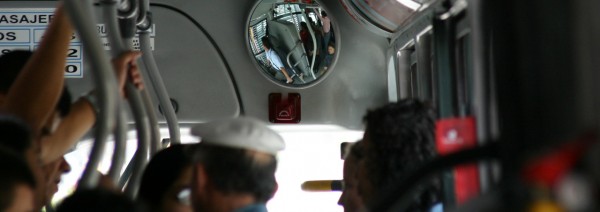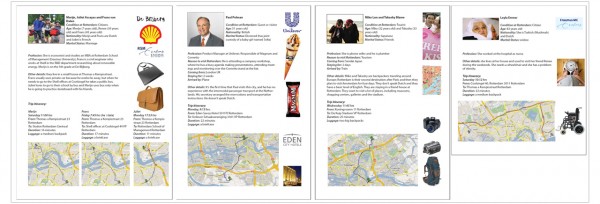Blog
Context mapping (part 2): Personas
 The term ‘user’ is quite ambiguous and often the members of a design team each have somebody else in mind when imagining who the user is. It is possible to set up lists of facts and figures that relate to the user but these can be hard to empathize with.
The term ‘user’ is quite ambiguous and often the members of a design team each have somebody else in mind when imagining who the user is. It is possible to set up lists of facts and figures that relate to the user but these can be hard to empathize with.
Describing personas (Dantin, 2005) is a tool that can help bring to life the users of a product and give the design team clearly defined users to focus on. Creating a fictive character can make it easier to design for this user because you can empathize with the character. Each persona is created to be a representative for a specific user group that uses the product being developed. These personas often reflect more extreme members of a user group since designing for these will also include the more ordinary users.
Related to ITO (Integral Transport 0 emissions) when thinking about people transporting in Rotterdam at 2015 and 2030 the following divisions could be recognized;
• Citizens going to their working place or their house or vice versa
• Tourists visiting city attractions
• Guests visiting their clients in their working place
Using these characteristics three different profiles were created. Information about their interests and affairs were described in order to give them a personality so they can be perceived as real people. Personas are useful in the design phase in order to offer support in the decision making process, creating criteria and references that can be discussed to determine if the ideas or concepts are satisfying their demands or not. For this reason the specific demands are also mentioned for each persona.
In order to generate a mission statement within the Vision in Product (VIP) process it would be too complex to aim at all these people at the same time. One final user had to be identified. The final goal of the complete transportation system is to transport the person who has the particular needs. For this reason this person was chosen as the final user.
The demands of the users, that have physical interaction with the product, such as the driver, will be met during the product development phase.
Related posts:
- Context mapping (part 1): Observation
- Context mapping (part 3): Mobility Diary
- Context mapping (part 4): timeline
Some examples:
[nggallery id=5]
Javier Ricardo Mejia Sarmiento



15 years ago ·
Todavia no lo puedo creer. ¿Javito en el énfasis de transportes? ¿ con max imini?